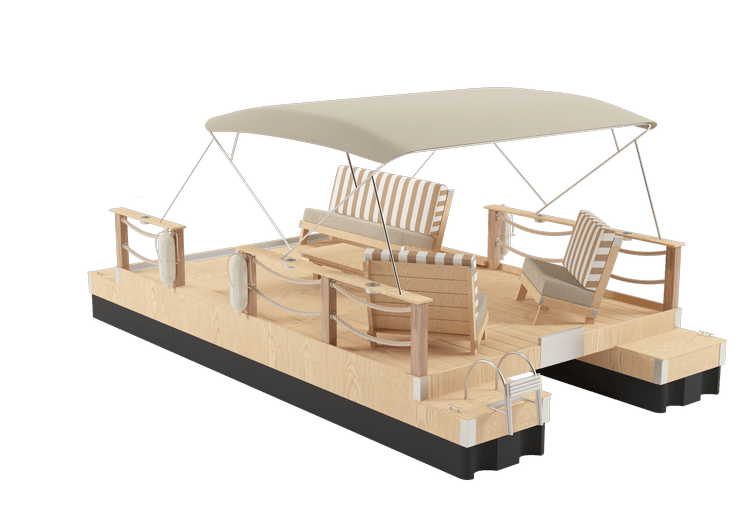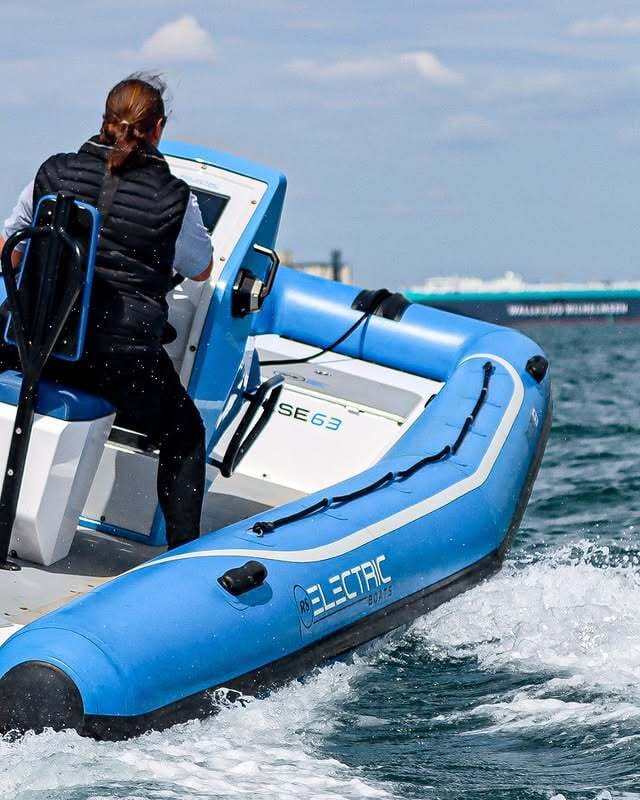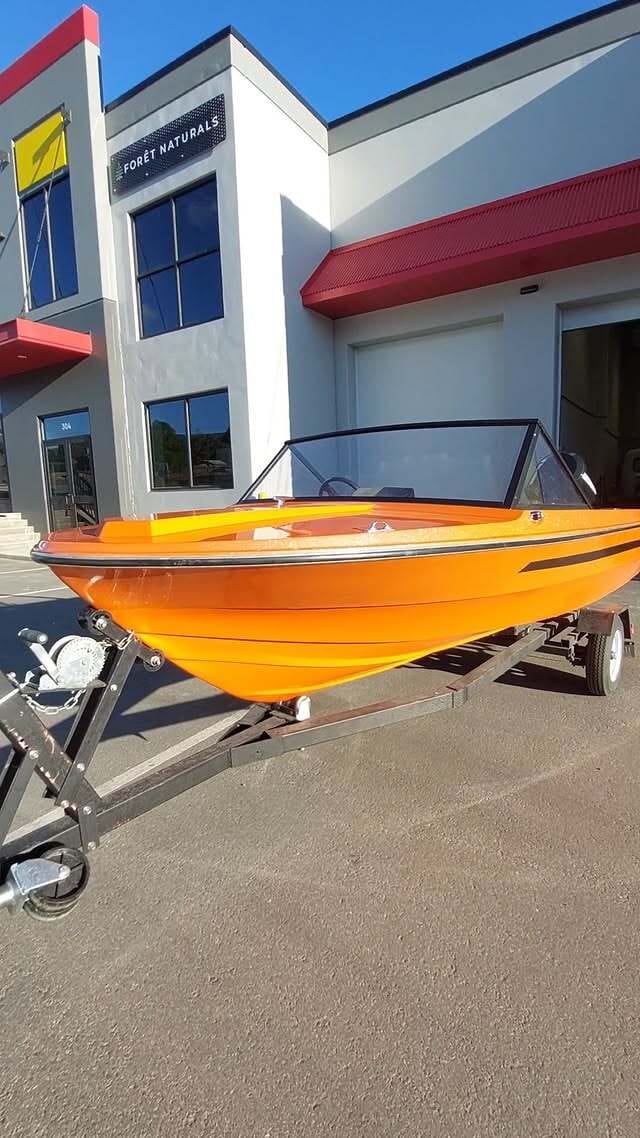- eBoat Newsletter
- Posts
- Electric Powered Dock!
Electric Powered Dock!
⚡️ Answering the question: Is it time to go electric on the water?
Your weekly newsletter covering the electrification of the marine sector. Issue 95. Not a subscriber? Join here for free.
🌊 ePWC - MARINE SUPERCHARGER COLLABORATION
Taiga Motors Inc. and Aqua superPower announced a strategic partnership on July 24 2025 that connects Taiga’s electric personal watercraft with a marine fast-charging network extending across North America and Europe.
Aqua superPower operates 59 dockside sites and supplies chargers from 22 kW destination posts to DC units rated 250 kW. The agreement lets Taiga riders use the network for “plug-and-play” stops that can raise an Orca battery from twenty to eighty percent within twenty minutes.
Taiga’s Orca draws up to 120 kW from a 25 kWh lithium-ion pack, delivers 160 hp, and reaches 62 mph. A Level 2 session needs three and a half hours; CCS Level 3 charging on Aqua posts trims the wait to forty minutes.
A May production update introduced a new cooling loop that lifts continuous battery output by sixty-five percent and doubles peak DC charge rates, cutting a full recharge to under thirty minutes.
Taiga chief executive Sam Bruneau said infrastructure scale unlocks electrification, while Aqua chief operating officer Karen Gill added that matching vehicle demand with charger rollout lowers costs for every marina installation.
Further information sits at the builder’s site: Taiga Motors.
🛝 ELECTRIC POWERED DOCK
Terraflo turns a fixed dock idea into a self-propelled platform, giving cottage owners a stable 8-by-16-foot raft that seats eight and hauls 3 500 lb over calm lakes. The deck provides 110 sq ft of open space and mounts to treated-wood beams that rest on HDPE pontoons filled with closed-cell foam, a layout approved by Transport Canada for year-round mooring in fresh water.
Western red cedar tops the frame and resists rot without chemical coatings, while hidden aluminum brackets lock furniture and railings in place. Each model ships with a transom rated for either a 55-lb-thrust trolling motor or a 9.9 hp petrol outboard, though - we suspect/hope - most buyers pick an electric unit to keep noise off the water.

Source - Terriflo website
Terraflo promotes the Parsun Joy 1.2 electric outboard as its matched power option. The motor delivers 1.2 kW (≈3 hp) from a 36 V direct-drive permanent-magnet unit and carries a 1 440 Wh lithium pack integrated under the cowling. Total propulsion weight sits near 20 kg, with 9.2 kg in the removable battery. Standard charging needs eight hours on shore power; a separate fast charger trims that to two.
Range depends on draw: at 600 W the pontoon covers 10 mi at 4.3 mph in about 2 h 24 m; at the full 1.2 kW setting it holds 5.4 mph for 1 h 12 m and still logs 6.5 mi—adequate for dock-to-sandbar runs and evening cruises.
Furniture sets vary by trim: Le Matelot carries a folding roof, ladder, and bare deck; Le Nautique adds two swivel chairs, a bench, and a table; Le Capitaine swaps in twin benches, a rod holder, and a clamp-on grill. All versions share the same hull, so upgrades bolt on when needs change.
Details on lead times, colour collections, and financing sit at the builder’s site: Terraflo.
⚙️HYBRID PATROL BOAT
King County Sheriff’s Office Marine Division in Washington has ordered a 46-foot diesel-electric hybrid patrol boat from California builder Moose Boats, design M1, for law-enforcement duties on Puget Sound.
The vessel pairs two 625 hp Volvo Penta D11 diesels with in-line twin Danfoss electric motors that drive Hamilton waterjets, forming a parallel hybrid system that keeps conventional range while cutting exhaust during patrol work.
A Corvus Dolphin Power battery pack supplies enough energy for two hours at five knots; the diesels recharge the pack through shaft generators and add thrust when higher speed is required.
Hamilton AVX Express joystick controls with Jet Anchoring and a handheld remote give the crew tight-quarter maneuver from any position inside the wheelhouse.
Raymarine radar, chart-plotter, AIS, depth sounder, and a rear camera integrate with ICOM VHF sets and a dedicated tow sonar to support search, rescue, and evidence recovery.
General Services Administration pricing and a grant under Washington’s Climate Commitment Act fund the build, aligning public-safety readiness with state emission targets.
Construction at Moose Boats’ Vallejo yard will place King County among the first U.S. agencies to field a hybrid patrol craft. More information sits at Moose Boats.
📄 RS ELECTRIC BOATS
RS Electric Boats sprang from RS Sailing in 2018 to tackle the emissions problem created by petrol coach craft that shadow dinghy fleets and regattas. The team started with a clean-sheet RIB design that pairs a cathedral hull with recycled-PET cores and resin-infused composite laminates, keeping weight low while giving the boat the stability coaches and harbour staff need.
The flagship Pulse 63 measures 6.3 m in length, spans 2.3 m across the tubes, carries six adults, and weighs about 815 kg. Its RAD 40 electric outboard delivers 40 kW of continuous power, driving the boat to 23 knots. A 46 kWh 400 V lithium-ion pack sits low in the hull for proper trim, and range charts show 100 nautical miles at 5 knots, 60 nautical miles at 10 knots, and 30 nautical miles at 20 knots.
Battery, inverter, and motor share liquid cooling, and the pack accepts CCS fast charging; a 20 to 80 percent recharge takes roughly half an hour at a 75 kW dockside charger. RS Electric Boats has begun fitting a new 63 kWh pack that slots into a smaller compartment and pushes endurance even further without altering the hull form.
Real-time range software from RAD Propulsion and Metron-EV displays remaining distance on a touch screen, reducing range anxiety for crews that patrol marinas or support youth racing. At 5 knots the Pulse 63 can cover up to 140 nautical miles on one charge, a figure that rivals many diesel tenders of similar size.
Early adopters include the organizers of the Oxford-Cambridge Boat Race, who used twin Pulse 63 craft as chase boats for the 2025 edition on the Thames. Harbour authorities in Salcombe and Kent have taken delivery as well, citing lower fuel bills, easier maintenance, and the value of a silent platform for rescue work.
With production under way in the UK and distribution links forming across Europe and North America, RS Electric Boats positions the Pulse 63 as a practical alternative to petrol RIBs for coaching, port operations, and super-yacht tender duties. The company plans to expand its line with larger workboats built on the same composite-and-battery architecture, aiming to cut on-water carbon emissions without sacrificing speed, payload, or seaworthiness.
🏄🏾♂️ SOCIAL MEDIA POST OF THE WEEK
Restored and electrified ‘Orange Boat’, sparkling in the sunlight.
If you are finding this newsletter interesting or valuable, please help us by sharing this on social media and/or forwarding the registration link to a friend or colleague.




